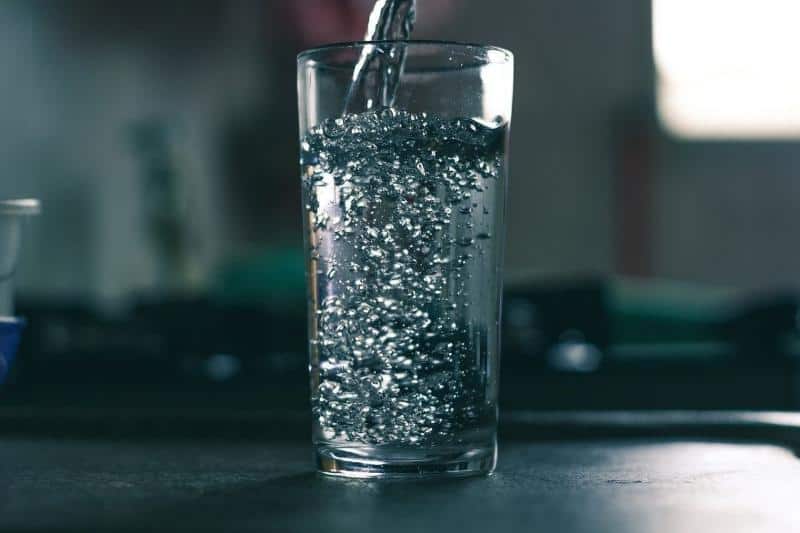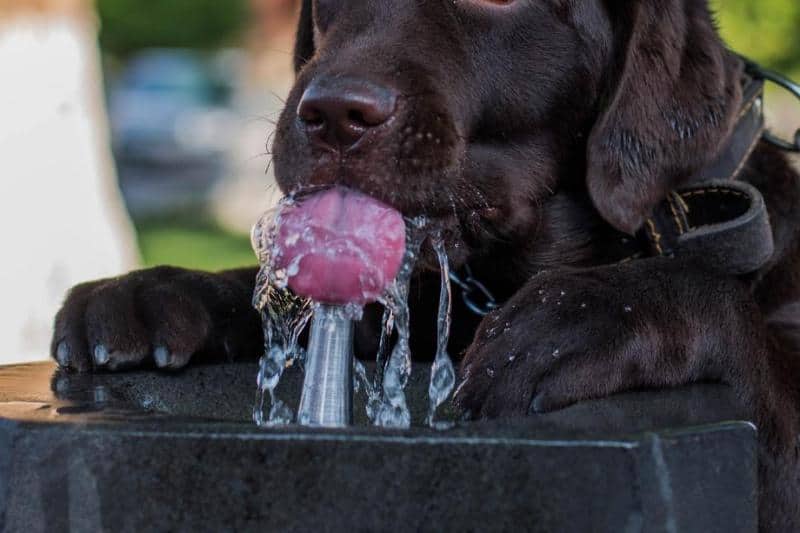Under sink water filters remove contaminants, but can they also chill water as well as do their main job.
Under sink water filters are the latest and greatest edition to easy installation of home water filtration. Not only are they easy to install, especially compared to some other types of water filters, but they provide clean drinking water.
To be honest, it also about getting rid of ‘bought’ bottled water, what a waste! And those companies make SO much money!
Can an Under Sink Water Filter also Chill Water? While under sink water filters are designed to be connected to your cold water line (by T-valve, saddle valve, etc.), most are not intended to chill the water as well. However, there are some water chillers that can be connected to your water line simultaneously with an under sink water filter.
You can rest assured, though, that when you use an under sink water filter to remove contaminants and toxins from your water, you are going to be delighted with the results.

Not only will the water taste WAY better because it does not have so many extraneous particles in it, but it will be better for you as well.
Let’s take a closer look at under sink water filters.
Under Sink Water Filters vs. Water Chillers
As you begin exploring your various water filtration options, you will probably be amazed at just how many options there are.
And it’s confusing, that’s why I’ve made it easy for you.
Pairing this with the type of filtration that can be specifically sought out (different toxins, for example), will leave you astounded and ready to jump on board with reviewing and installing your first water filtration system within your home.
But, while under sink water filters get rid of particles, toxins, and other contaminants, they differ from water chillers that focus solely on changing the temperature of the filtered or unfiltered water that they send to your faucet.
To get the best of both worlds, you would want to find a way to install both options.
With that in mind, there are a few key differentials to make between under sink water filters and under sink water chillers. Looking more closely, it is not too difficult to be able to tell the difference.
Under Sink Water Filters
Under sink water filters differ from under sink water chillers in shape, design, and overall functioning capacity. Under sink water filters will connect to your pipes either with a T-valve, saddle valve, or some even connect directly to the cold water line themselves.
Either way, you will be connecting your under sink water filter to the cold water line.
While this results in the water coming out of your water line being filtered, this does not mean that the under sink water filter is itself cooling the water.
Contrarily, the water will enter into one end of the water filter and exit the other end significantly cleaner but expectantly at the same temperature as it was when it entered into the water filter in the first place.
When you take a look at the design of an under sink water filter, it is pretty apparent how it can work and how it differs from an under sink water chiller. Under sink water filters tend to take on the shape of one or multiple tubular filters that are connected to one another.
They have a line in and a line out option that is generally connected to the cold water line by an associated valve piece.
As the water enters into the tubular chamber, it will be run through various filters, ionized, and processed through whatever means the filter is designed to process it.
Some under sink water filters specifically focus on prodding fluoride, iron, and other contaminants from the water, for example.
After the water has been run through the series of filters, it will then run through your faucet and be well on its way to your glass, your coffee pot, or your pasta dish that you are attempting to prepare free of toxins and contaminants.

Under Sink Water Chillers
As compared to under sink water filters, under sink water chillers simply aim to change the temperature of the water that enters into their system so as to promote a cooler drink.
However, most under sink water chillers are not designed to filter the water that they come into contact with but to simply pass along a colder drink through the use of a refrigerant.
This becomes apparent when you begin to look at the overall design of an under sink water chiller. More often than not, your under sink water chiller is going to be a compact version of what you would find in an actual refrigerator or another cooling device.
Water chillers often work with fans, refrigerants, or other types of devices to immediately cool off the water that passes through them.
As they are connected to your water line, they will transfer this water directly to the faucet. But, unlike under sink water filters that often come with their own faucet to be installed, under sink water chillers will generally use the faucet that you are already using.
Many people find this to be advantageous considering they will not have to change their typical system of pouring water or remember which faucet to use to enjoy an ice-cold glass of deliciously cool water.
However, these devices are not typically intended on the filtration aspect that under sink water filters focus more heavily on.
What Does an Under Sink Water Filter Do?
So at this point, you realize that under sink water filters are not typically designed to chill your water. This might be disappointing to you, or it might be something that you did not expect from this type of device in the first place.
Either way, you may be curious about what an under sink water filter will do (and how it will consequently change your life).
What Does an Under Sink water Filter Do? An under sink water filter accepts water from your cold water line, runs it through a series of different filters (dependent on the model that you use), and delivers water that is toxin and contaminant-free to your existing faucet or to an associated faucet that is installed alongside it.
But if it does not chill the water, then how are you able to drink cool water that is filtered with your under sink water filter?
This is a good question, and it is understandable why it could be confusing. But, realistically, this is not overly complex to understand.
You can still have an end result of cold water after using an under sink water filter. Fortunately, since the water filtration system is connected to the cold water line, you will not have to worry about excessive heat being added to it in the first place.
Instead, the standard water will enter into your under sink water filter, and you can expect for it to be the same temperature as before it entered into the filter in the first place. Often, this results in room temperature water.
However, the under sink water filter works to remove all contaminants, toxins, and particles that should not otherwise be found in the water (or that are not safe to consume). There are many models that focus specifically on major contaminants that you might be dealing with specifically.
For example, some under sink water filters are designed to remove iron while others are more focused on removing fluoride.
Typically speaking, though, both of these types of water filters will still try to remove heavy metals like lead and mercury as well as other byproducts that can be found in the water.
Under sink water filters work to provide you with clean drinking water that has not been contaminated by your local environment.
Whether that is the iron that comes from your well or water drains, or that refers to the chlorine used by your local water plant in the cleaning process, an under sink water filter can help to restore the ideal balance of minerals that you desire to be included in the water you drink and cook with.
How Do You Chill Filtered Water?
So, if your under sink water filter is not doing the chilling for you, then you might be wondering how to achieve an ice-cold beverage straight from your faucet. Fortunately, there are options available to you.
How do you chill filtered water? When using an under sink water filter, you can chill the water by adding an under sink water chiller or using more traditional routes like ice and refrigeration of a large container.
Considering the subjectivity of the situation, we will not include all of the ways that you can chill filtered water.
However, in using an under sink water chiller or ice cubes, for example, you can achieve a glass of filtered water that matches the icy temperature that you were daydreaming about.
